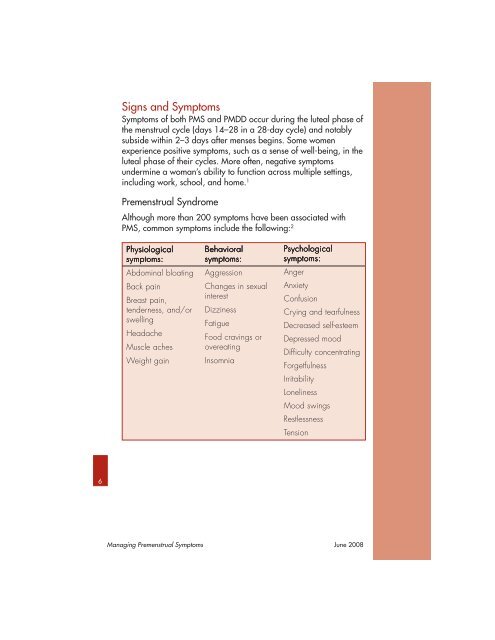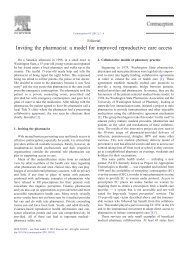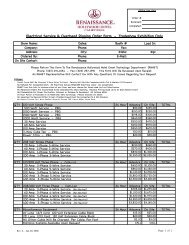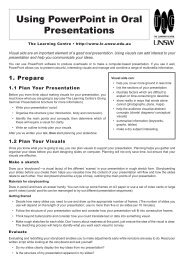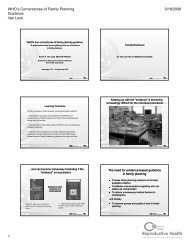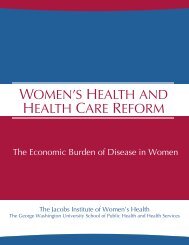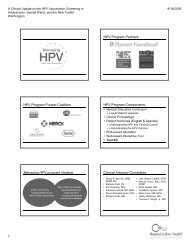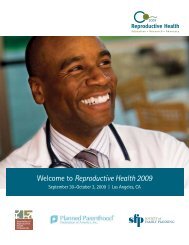Managing Premenstrual Symptoms - Association of Reproductive ...
Managing Premenstrual Symptoms - Association of Reproductive ...
Managing Premenstrual Symptoms - Association of Reproductive ...
Create successful ePaper yourself
Turn your PDF publications into a flip-book with our unique Google optimized e-Paper software.
Signs and <strong>Symptoms</strong><br />
<strong>Symptoms</strong> <strong>of</strong> both PMS and PMDD occur during the luteal phase <strong>of</strong><br />
the menstrual cycle (days 14–28 in a 28-day cycle) and notably<br />
subside within 2–3 days after menses begins. Some women<br />
experience positive symptoms, such as a sense <strong>of</strong> well-being, in the<br />
luteal phase <strong>of</strong> their cycles. More <strong>of</strong>ten, negative symptoms<br />
undermine a woman’s ability to function across multiple settings,<br />
including work, school, and home. 1<br />
<strong>Premenstrual</strong> Syndrome<br />
Although more than 200 symptoms have been associated with<br />
PMS, common symptoms include the following: 2<br />
Physiological<br />
symptoms:<br />
Abdominal bloating<br />
Back pain<br />
Breast pain,<br />
tenderness, and/or<br />
swelling<br />
Headache<br />
Muscle aches<br />
Weight gain<br />
Behavioral<br />
symptoms:<br />
Aggression<br />
Changes in sexual<br />
interest<br />
Dizziness<br />
Fatigue<br />
Food cravings or<br />
overeating<br />
Insomnia<br />
Psychological<br />
symptoms:<br />
Anger<br />
Anxiety<br />
Confusion<br />
Crying and tearfulness<br />
Decreased self-esteem<br />
Depressed mood<br />
Difficulty concentrating<br />
Forgetfulness<br />
Irritability<br />
Loneliness<br />
Mood swings<br />
Restlessness<br />
Tension<br />
6<br />
<strong>Managing</strong> <strong>Premenstrual</strong> <strong>Symptoms</strong> June 2008


